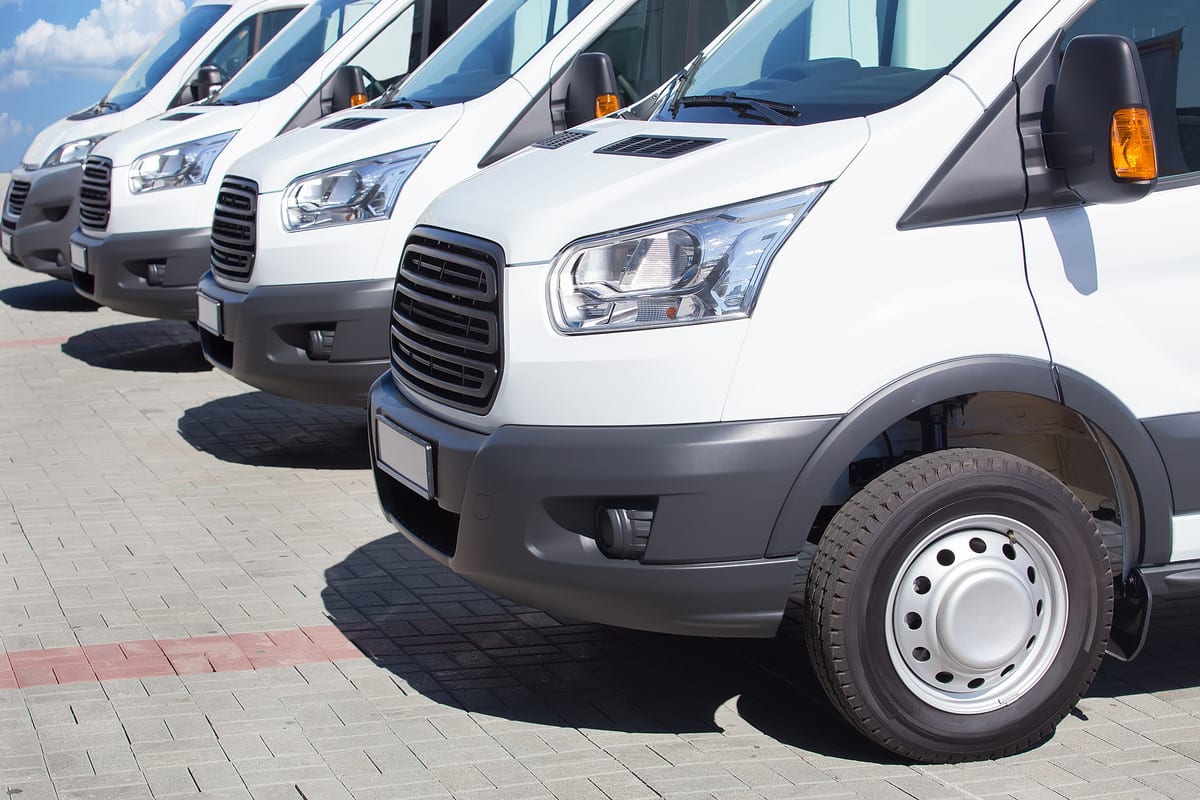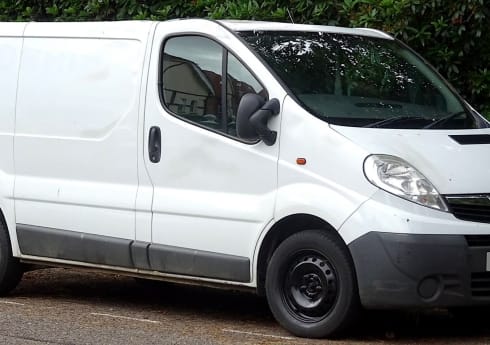What to Look for in a Vehicle Tracking System

If you are looking to grow your business and improve your bottom line, a vehicle tracking system is a must.
By giving you information on your vehicles and drivers, these systems save an immense amount of time and stress in running your business, dealing with problems and answering routine questions from customers or drivers.
They can even help you save money and deliver a whole range of additional benefits which we are going to cover in this short guide on what to look for in a vehicle tracking system.
Remember that even if you are not tied into a long-term contract, switching vehicle-tracking providers is a hassle. It’s better to make the right choice in the first place.
If you are completely new to vehicle tracking, you may want to refer to our 5 minute guide to vehicle tracking.
Things to consider when choosing a vehicle tracking system
When looking into vehicle tracking systems, you need to be able to identify which features are going to be right for your business.
All systems give you
- live vehicle locations
- estimated times of arrival
- passive monitoring.
Passive monitoring, or geofencing, means you receive alerts when vehicles enter or leave specific locations or areas that you have set up in your account. These could be your depots, suppliers of materials or important customers.
But what else do you need?
Do you need dashcams?
All vehicle tracking and telematics systems can support camera data, but not all systems are the same.
Ask potential providers how much video storage capacity is included in your basic plan, and how many hours of footage this represents altogether. If your storage capacity is not enough, you will be rushing to download important incident footage from your vehicle tracking portal before it is deleted to make space for new video. Worse, you may run the risk of losing vital minutes that you needed for an insurance claim.
Ask how long data is stored for. Some systems have an automatic deletion policy after a certain time period, no matter how much storage space you have used.
Do different drivers share vehicles?
If you have more than one driver using the same van, you will need a vehicle tracking system with driver ID ignition. This is a simple fob key that lets the system know who is driving the vehicle, and logs their data appropriately.
These driver ID fobs also add another layer of security, as the vehicle cannot start without them.
Are you worried about vehicles being stolen?
There were over 113 thousand motor vehicle thefts in England and Wales in 2019 – 2020. Although this number is far lower than it was twenty years ago, it is unfortunately on the rise again.
45.3% of stolen cars are never returned to their owners – and recovery rates are falling. The recovery rate for stolen commercial vehicles without asset trackers – including as construction equipment and farm vehicles – is just 10%.
Some people buy vehicle tracking systems hoping they will help them recover vehicles if they are stolen. Unfortunately, most “professional” vehicle thieves know how to find a vehicle tracker – they’re wired to the vehicle battery – and remove it.
For security, you are better off including a separate asset tracker alongside your vehicle tracking system. Some asset tracking and recovery services manage to restore as many as 90% of vehicles to their rightful owners by using asset trackers.
An asset tracker is a device with its own battery that lasts several years. It can be attached – hidden – anywhere inside your vehicle. This makes it far harder for thieves to find and remove it. The best asset tracking suppliers also provide a recovery service, working with the local police to locate the stolen asset rapidly.
These asset trackers are usually used alongside a vehicle tracking system with other functionality, but if keeping assets safe is the only service you need, an asset tracker can work independently and is highly economical.
Who needs to use your system? Is there a range of log-in permissions and levels?
If you own your own relatively small business and manage your own drivers and vehicles, then you simply need your vehicle tracking login to let you see all the data in your system.
On the other hand, if your vehicles are managed through the day by a dedicated fleet manager, and you have a separate procurement manager who will use the system to keep on top of merchandise movements, and a bookkeeper who only needs to see timesheets, and so on, then you will need to variety of permission levels to protect private data and make sure each person sees only the information they need to see.
You pay more for systems that offer different login permissions.
Do you need to reduce vehicle wear and tear, crashes or fuel consumption?
If the answer is yes to any of these questions, then you need a system with driver monitoring.
You are likely to be painfully aware of how much these problems are costing you, yet perhaps less aware of exactly how your employees’ driving style is causing them.
These systems measure:
- harsh braking
- rapid acceleration
- rapid cornering
- speeding
All these habits contribute to damaging different vehicle components and greatly reducing their usable life.
They also make collisions more likely as well.
They contribute to fuel wastage as well, as an uneven driving speed will consume far more fuel than a steady cruising speed and rarely shaves enough time off the journey to make a useful difference.
Leaving the engine idling is of course the greatest fuel-wasting habit, and a very common bad habit not only among multi-stop delivery drivers but also, surprisingly, among drivers of larger vehicles who sometimes leave an engine idling for long periods of time while chatting, waiting for loads and so on.
For more on how these systems work, visit our page What is IVMS or an In-Vehicle Monitoring System?
Some economical vehicle tracking systems can give you easily-digestible information, meaning it will not eat up too much of your time to find out the key factors and tackle them. They summarise the accumulated data into driver scores that let you know how far your drivers deviate from the ideal on each of the four driving habits, plus idling. You can set target scores and incentivise your drivers to meet them.
More sophisticated telematics systems can give you accurately measured breakdowns of exactly how much fuel is wasted, or damage is done, by each driving habit. This means you can actually tell a driver how much diesel he or she wasted last week because of his or her over-revving habit. You can also set targets for improvement and measure if they meet them. These systems take more time to use and cost more, which is why they are normally use by companies that operate HGVs, where fuel waste and vehicle repairs can have a severe impact on fleet running costs.
Do you need to comply with specific safety standards or regulations?
Vehicle tracking or telematics systems are essential to comply with various industry or regional safety regulations.
These include:
- Fleet Operator Recognition Scheme (FORS), a voluntary accreditation scheme that recognises fleet safety and opens the doors to more desirable contracts. To obtain FORS silver accreditation for vehicles weighing 7.5 tonnes and over, you need to install cameras to achieve 360-degree visibility for the driver for rigid vehicles. For articulated vehicles, cameras are required on the cab but not the trailer.
- Construction Logistics and Community Safety Standard (CLOCS), which calls for the construction industry to recognise its safety responsibilities for vehicles and drivers delivering to, and collecting from, construction sites. Many contracts, especially public sector, demand accreditation to this national standard, for which cameras linked to a telematics or vehicle-tracking platform are required.
- Work Related Road Risk (WRRR). If you operate trucks or vans in the government’s supply chain in London, you will need to meet high WRRR road safety standards. London turns away vehicles from construction sites if they do not meet these standards.
- London’s Direct Vision Standard (DVS) is a law passed in 2020. Owners of HGVs over 12 tonnes which operate in Greater London must eliminate all blind spots, by adding camera equipment and other enhancements to driver vision, and then obtain a permit. To comply, your vehicle tracking system must support external multi-cameras and in-cab monitors to make sure your vehicles are less likely to be involved in accidents.
How much automated record keeping do you need?
For larger fleets in particular, administrative workloads and related expenses can be substantial. Vehicle tracking systems can, in many cases, help ease the record keeping burden and even automate large chunks of it. All data that is relevant to your fleet is recorded and stored in the cloud for you to access, organise, and use as and when you need it in the way that you want to.
Verifying hours worked, checking vehicle mileage, scheduling maintenance, tracking service locations, and more can all be done using vehicle tracking systems. By plugging in other integrations such as fuel cards, you can even eliminate headache-inducing work such as expenses processing and fuel expenditure calculations.
Is your business or your fleet growing or likely to evolve?
If you may need to add more vehicles, sell some vehicles or start using them differently, you don’t want to be tied to a vehicle tracking provider whose system cannot accommodate your changed needs. They may be held back by not having the particular type of hardware device you need, or their system may be unable to handle certain types of data.
Ask about flexibility up front.
How intuitive is the navigation and how easy are the report screens?
The last thing you want to do is invest in a vehicle tracking system, only to find that it clunky and confusing to use – a system that collects lots of data and monitors drivers is of little use to you if you can’t access and interpret this information in the time you have available.
Vehicle tracking software presents the data in a collection of Report Screens. Some systems let you customise these as you wish, while others are designed to be relevant to a huge range of businesses, user-friendly and ready to use.
Ask to see screenshots of some report screens before committing to buy.
Vehicle tracking can give you a bird’s eye view of your fleet at all times, making it quick and easy to manage all your drivers. You can deal with breakdowns or accidents immediately and even check the driver dashcam footage or speeding incidents from your mobile phone.
As a free comparison site, iCompario can help you find the right system for the right price.
